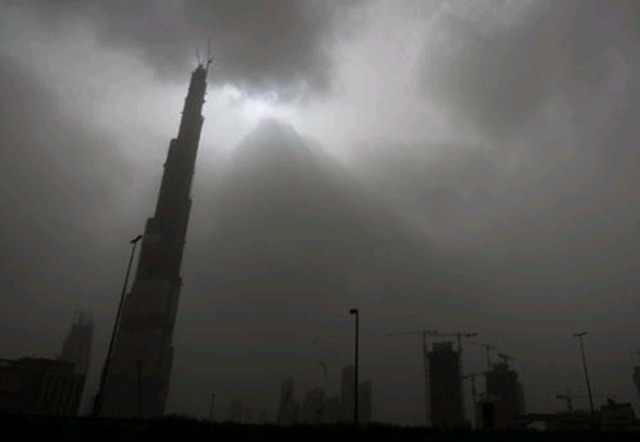Dubai: Bring your umbrellas and raincoats with you as wet weather, and possibly even thunderstorms, is forecast for Tuesday and Wednesday in most parts of the UAE due to an extension of a low pressure affecting the country.
A low pressure coming from the southwestern UAE is causing scattered showers that may bring more rain on Tuesday and Wednesday.
On Monday, the city of Abu Dhabi city, the western region, the western coast, Madinat Zayed, Liwa areas, the southern part of the UAE, Al Ain, and the north of Al Ain under Dubai, and parts of Dubai received different intensities of rain at different times during the day, according to the National Centre of Meteorology and Seismology (NCMS).
Khatam Al Shakla in Al Ain recorded the highest rainfall of 10.2mm as of 6pm, but the weather station at the Al Jazeera Border Guard continued to record more rainfall that might exceed 10.2mm after 6pm.
More rain is expected on Tuesday and Wednesday during the peak of the low pressure. It is difficult, however, to pinpoint exact areas where it will rain, a forecaster said.
“This is an instability in weather conditions wherein we are actually expecting the clouds to be almost everywhere. We expect it to be cloudy to partly cloudy at times. But the chance of having cumulous clouds, which is associated with some rain, sometimes it’s light or moderate, is there. So it varies,” a forecaster told Gulf News.
Cumulus clouds are cotton-like clouds that come in masses or balls. It often has a flat base with rounded towers. When they are present, the winds are usually moderate in general and freshening at times.
But when blowing over the sea and forming into cumulonimbus clouds, associated with thunderstorms and rainfall, it could cause the sea to be rough, giving rise to 3ft to 5ft waves, that might reach 6ft to 8ft.
According to Accuweather, Dubai, Abu Dhabi, Sharjah, Ras Al Khaimah on Tuesday will have cloudy weather with a 60 per cent chance of shower or thunderstorm in the afternoon.
By Tuesday evening, the skies will be overcast with chances of shower or thunderstorm. The same goes for Fujairah with a slightly lesser chance of thunderstorms during the day.
The NCMS forecaster clarified that the “strange weather” is a natural occurrence at this time of the year and is not due to cloud seeding. The bureau is continuously doing cloud seeding to enhance the amount of rainfall but not to create rain.
“There is an extension of a low pressure on the upper air and this is associated with the low pressure on the surface on the lower layers, which cause this instability that enhance the clouds. We are doing the cloud seeding to support the enhancement of the clouds. Basically, we’re trying to squeeze the clouds more to have more amount of rain. This is to support the rain production,” the forecaster said.
The weather instability during March is due to troughs extending from the west at time and from the east at another time. This indicates the beginning of the first transitional period, according to NCMS.










